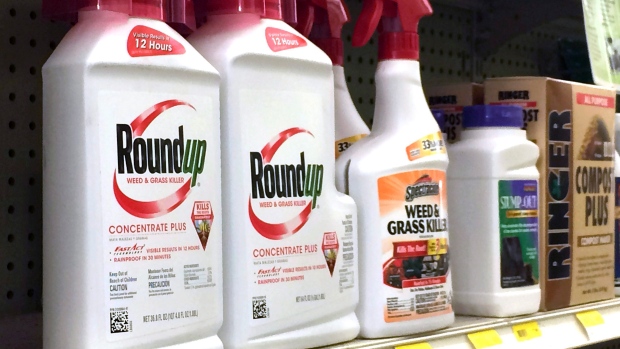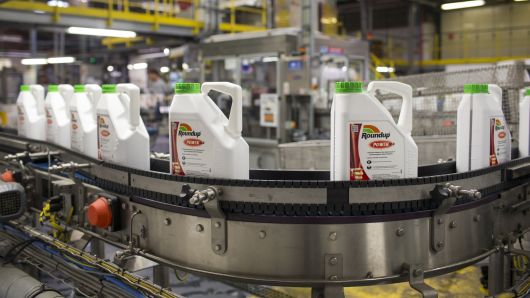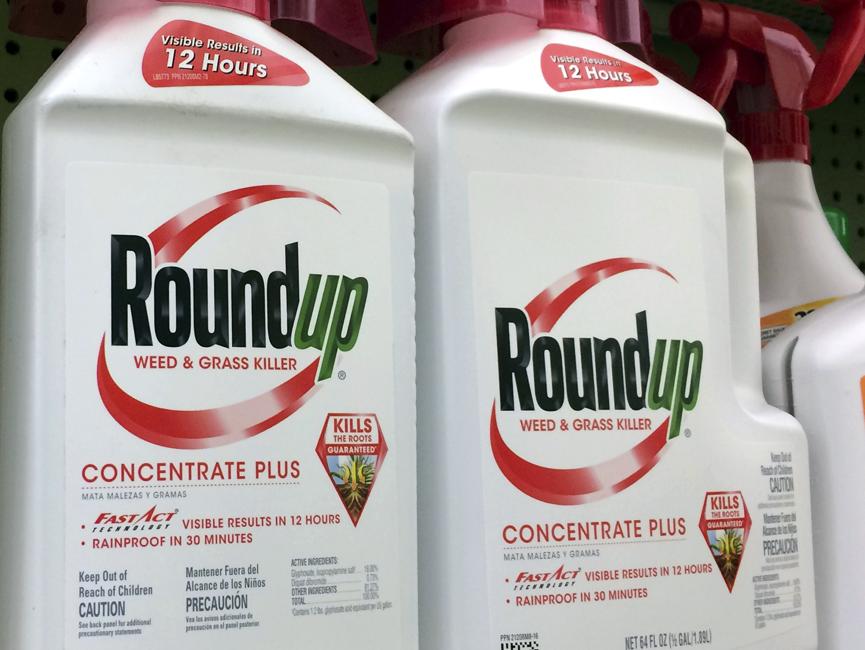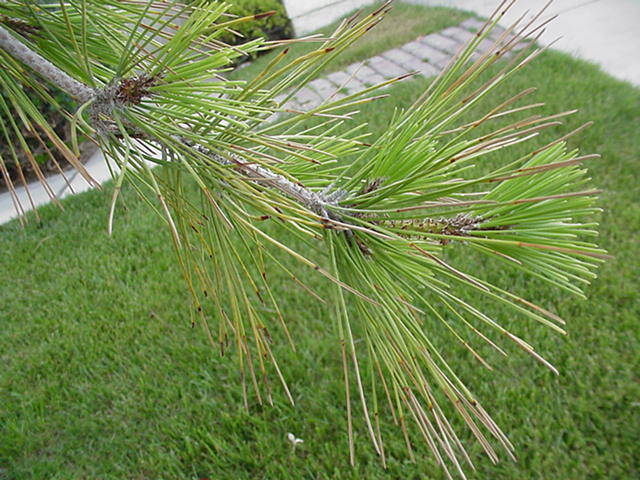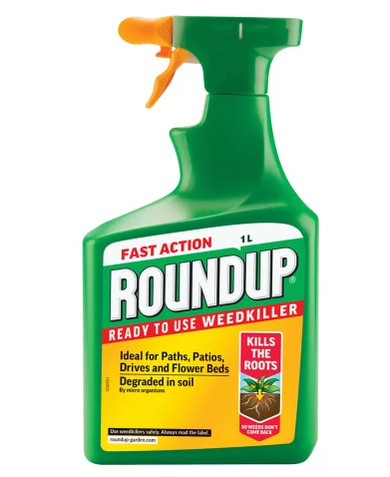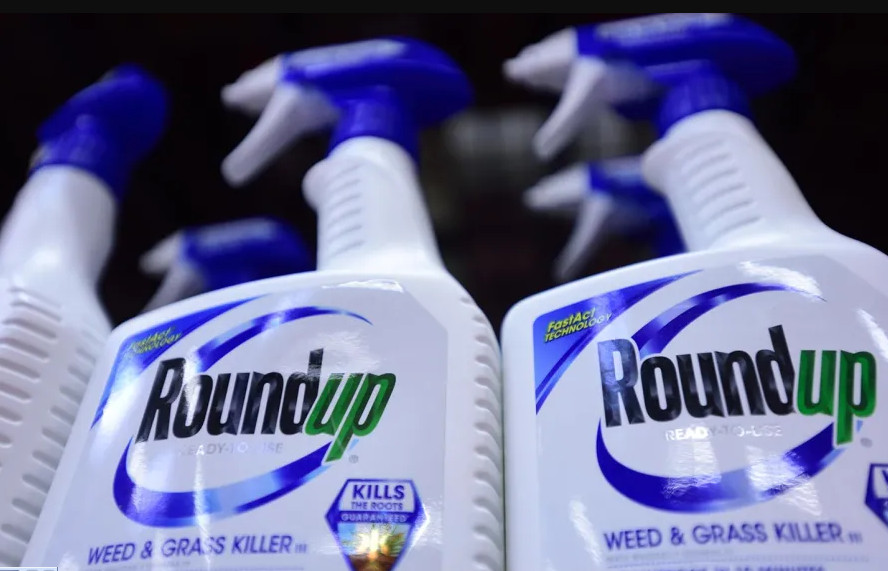It’s easy to see that the state Department of Transportation has finished up its annual half-million-dollar weed-spraying program for the summer.
You can tell by 3-foot-wide swaths of dried, brown vegetation along 5,000 miles of guardrails, sound barriers and center medians on Connecticut highways and secondary roads.
“The weeds, grass and vegetation grows back the next season,” said Adam Boone, who heads the DOT’s herbicide program. “It minimizes the manual labor needed to control growth.”
The DOT stresses that its crews are well-trained and the chemicals are safe, and the state Department of Energy and Environmental Protection approves the method.
The environmental community, however, is not so sure about the safety.
The herbicide mixture is mostly Roundup, the controversial weed killer made by Monsanto that has been declared a cancer-causing agent in the state of California. The active ingredient is glyphosate.
The environmentalists warn that emerging research confirms that Roundup is dangerous and state officials should consider less volatile options.
“I am afraid we just over utilize these chemicals when they are really not needed,” said state Sen. Ted Kennedy Jr., D-Branford, co-chairman of the legislative Environment Committee, who in 2017 proposed prohibiting herbicides along state highways. The bill failed, but related legislation, requiring railroad companies to notify the chief elected official of towns where they plan to apply herbicides, was enacted into law.
The annual DOT herbicide application is a one-time event, although the state’s summer-long budget battle of 2017 resulted in the suspension of the program for the year.
During the June-to-August weed eradication, the DOT sprays about 1,000 gallons of Roundup, combined with small amount of other agents, statewide, covering 1,010 acres along interstate highways and 820 acres on secondary roads.
Diluted at about a half gallon per 40 gallons of water, the chemical is very effective, does not migrate from the vegetation and soil where it is applied, and then is consumed by fungus and bacteria, Boone said, turning it into carbon dioxide within two months.
“It’s the most cost-effective method,” Boone said. “These are systemic and kill at the base of the plant and the root for the season. They’re not leeching. They’re bound to the soil. We only want to kill and manage the vegetation.”
DOT employees would be overly exposed to hazardous traffic if sprays were not used, Boone said.
The Connecticut Agricultural Experiment Station supports the use of the chemical, agreeing that left untreated, weeds and nuisance trees could sprout, erode asphalt roadways and lure browsing deer closer to motorists.
“Herbicides are like any other tool,” said Jeff Ward, chief scientist at the New Haven-based experiment station. “You want to make sure you follow the directions. The good thing is that it does bind to soil almost immediately.”
Not convinced
State roads aside, the environmental community is even more concerned about the herbicide regimens at golf clubs, housing complexes and even among average homeowners, who may overdose their properties thinking more chemicals are better, while killing bees, birds and small animals.
Leading environmentalists, who have generally been thwarted in the Connecticut General Assembly, warn that glyphosate — traces of which have been found in oat cereals and other foods — is dangerous, and that Roundup, in the hands of average homeowners who are under-informed about the proper use of the chemical, is particularly susceptible to misuse.
Lori Brown, executive director of the League of Conservation Voters, said that this year, environmentalists were able to win legislation banning the use of mechanized misters that automatically send measured amounts of herbicides into the air and on lawns and gardens.
“I cannot stress enough that particularly with pesticides that are widely available, the public can use them when they don’t know what they’re doing,” she said. “Roundup is probably the most prevalent when it comes to just abusing it. ‘The more the merrier, let’s douse everything.’ ”
Brown and Kennedy say it’s a huge, usually losing fight in the legislature to attempt to just get warning labels on products.
Last year, the federal Environmental Protection Agency ruled against banning the pesticide chlorpyrifos, even after scientific evidence showed that drinking water containing the chemical had harmful effects on children’s brain development. It was seen as another victory for the chemical industry.
But last month, a San Francisco jury ordered Monsanto to pay $289 million to a former school groundskeeper dying of cancer, saying the company’s popular Roundup weed killer contributed to his disease. Hundreds of similar lawsuits are pending in state and federal court around the nation.
Louis W. Burch, Connecticut program director for the Citizens Campaign for the Environment, said Friday that with every new study, Roundup is looking more and more dangerous.
“We’d like to see a more precautionary approach to these chemicals,” he said, noting that the DEEP is understaffed and herbicide programs are under-inspected. “There’s not a great deal of transparency and accountability when these are being used.”
Burch recalled that in 2016, lawmakers passed a law meant to support pollinators such as bees.
“We’re promoting pollinator-friendly habitat and best practices and at the same time the state is spending millions of dollars on chemicals when we should be reducing our use of toxic pesticides.”
Credit: www.ctpost.com

